- News
- Reviews
- Bikes
- Accessories
- Accessories - misc
- Computer mounts
- Bags
- Bar ends
- Bike bags & cases
- Bottle cages
- Bottles
- Cameras
- Car racks
- Child seats
- Computers
- Glasses
- GPS units
- Helmets
- Lights - front
- Lights - rear
- Lights - sets
- Locks
- Mirrors
- Mudguards
- Racks
- Pumps & CO2 inflators
- Puncture kits
- Reflectives
- Smart watches
- Stands and racks
- Trailers
- Clothing
- Components
- Bar tape & grips
- Bottom brackets
- Brake & gear cables
- Brake & STI levers
- Brake pads & spares
- Brakes
- Cassettes & freewheels
- Chains
- Chainsets & chainrings
- Derailleurs - front
- Derailleurs - rear
- Forks
- Gear levers & shifters
- Groupsets
- Handlebars & extensions
- Headsets
- Hubs
- Inner tubes
- Pedals
- Quick releases & skewers
- Saddles
- Seatposts
- Stems
- Wheels
- Tyres
- Health, fitness and nutrition
- Tools and workshop
- Miscellaneous
- Cross country mountain bikes
- Tubeless valves
- Buyers Guides
- Features
- Forum
- Recommends
- Podcast
news
“This is what we need to see”: Council officer shuts down businesses’ concerns about replacing parking spaces with cycle stands with “facts and logic”; Remco Evenepoel asked Tadej Pogačar to share his power data after Il Lombardia + more on the live blog
SUMMARY
 Camden cycling and walking scheme (Camden London Borough Council)
Camden cycling and walking scheme (Camden London Borough Council)08 November 2024, 17:25
“I hope whoever wrote this took the rest of the day off”: Council officer shuts down businesses’ concerns about replacing parking spaces with cycle stands with “facts and logic”
It’s not very often that we get to see concerns aimed at traffic calming schemes such as cycle lanes and pedestrianisations, especially those which have been debunked time and time again and are not well-founded in the first place, be quelled this efficiently and succinctly.
But at least that’s what happened in Camden. The north London borough council undertook a public consultation earlier this year on the proposed pedestrian and cycling improvements on Clerkenwell Road, some of the changes also including included improvements to public realm in the area, as well as changes to parking and loading.
The consultation report which has recently been made available to the public, includes a list of concerns and the council officers’ responses to those. One of those concerns came from a business owner, who claimed that the reduced parking space on Warner Street would have a negative impact on their business.
The council officer’s response, originally shared on Twitter by Politico correspondent Jon Stone, is what has grabbed a lot of cyclists’ attention, and we’d say, rightly so.
The officer replied, first noting that only the proposed changes meant that the parking space would only be reduced by 15 metres, still leaving 47 metres of paid parking space on Warner Street.
They added: “There is evidence that businesses often overestimate the proportion of their business that comes from people who come by car. For example, a survey conducted by the London Borough of Waltham Forest found that businesses on Lea Bridge Road in Walthamstow thought that 63% of customers were travelling to their businesses by car. In reality, only 20% of customers travelled by car to the area. This is just as likely to be the case in Zone 1 (Camden) as it is in Zone 3 (Waltham Forest).
“In London, as well as other cities, up to 80% of shoppers go to town centres by modes other than a car: walking is the most important mode for accessing local town centres.
“Evidence from TfL, in fact, shows that just 7% of Londoners’ shopping trips to destinations in Camden, including in the Clerkenwell Road area, are made by car. Conversely, more than a quarter of such trips are made by public transport, and two thirds by walking and cycling. In addition and as described in the preceding chapter, 85% of Camden residents’ trips are not made by car. It is, therefore, unlikely that a significant volume of people visiting businesses in the Clerkenwell Road area are arriving by car.
“Officers, therefore, consider that the proportion of people travelling to the Clerkenwell Road area by car is low and that the proposed paid for parking facilities, would be sufficient to accommodate those who do choose to travel by car. The Clerkenwell Road area is well served by bus routes and a railway and tube station, providing a high level of public transport accessibility for those who are able/need to use those services. The proposed changes include the addition of new cycle parking stands to make it easier for cyclists to access local businesses. There are also multiple “shared transport” facilities in the area including Santander cycle hire, and e-scooter/e-bike hire parking bays.
“The measures make it easier for people to walk and cycle to businesses along the Clerkenwell Road corridor and surrounding area. This means that visitors to local businesses have an opportunity to choose to travel by a more sustainable mode of travel and that the corridor can be reached easily and safely without using a car.”
And as mentioned before, cyclists on social media can’t get enough of it.
“Can that be extended to the waltham forest team that spent weeks on lea bridge road asking businesses and their customers to get the evidence?”
“Not surprising at all. Studies concluded business owners tend to hugely overestimate how many of their customers drive to their shops.”
“But Jon, that’s just facts and figures, why should we believe that above anecdatal evidence?”
The post was retweeted by Tower Hamlets Living Street, who captioned it: “This is what we need to see!”, as well as Westminster Cycling Campaign.
08 November 2024, 17:30
Students claim lack of car parking is harming their studies – but university tells them to try cycling to class
Students at Queen’s University Belfast have claimed that the lack of car parking spaces on campus is negatively affecting their studies, just a month after the university unveiled three new cycle parking facilities for up to 80 bikes, as part of ongoing efforts to encourage active travel and “reduce car dependency”.
08 November 2024, 15:29
Startled phone driver caught by camera cyclist smashes into car before fleeing scene through red light – but police refuse to act because victim didn’t report incident
“The state of road policing in Harrow is zero,” one London camera cyclist has claimed, after the Metropolitan Police failed to act on footage he submitted which showed a motorist, seemingly startled by the rider confronting him over his phone use behind the wheel, smashing into the side of another car while trying to drive off.
08 November 2024, 10:20

“I want to know what you really pedalled”: Remco Evenepoel asked Tadej Pogačar to share his power meter data after Il Lombardia (spoilers: Pogačar didn’t)
Turns out, we are not the only ones in constant awe of Tadej Pogačar’s superhuman feats on the bike. In fact, double Olympic gold medallist Remco Evenepoel was so nonplussed after the front row seat to Pogačar’s fireworks in the season-ending monument Il Lombardia, that he asked him to share his power meter data.
In the interview with Het Nieuwsblad, the 24-year-old Belgian rider was asked what was his last message with Pogačar, to which he replied: “It was about an Instagram post from Velon with his average wattage of the last hour and a half in Lombardy. That couldn’t be right, because I had the same wattage and was three minutes behind.
“So I sent him: ‘I want to know what you really pedalled.’ Tadej didn’t tell me, but it was a joking and even a bit sarcastic question. We send jovial messages every now and then, for example, when one of us has a birthday. He’s not my best friend, but he is a good colleague friend.”
The last hour and half of the race would mean the section beginning after the descent of Madonna del Ghisallo, followed by the highest and most difficult mountain of the Italian monument, Colma di Sormano, surrounded on both sides by Lako Como and Lake Lecco.
And from Pogačar’s Strava post, we can see that Pogačar basically has a KOM through most of the segments, with Evenepoel, who eventually finished second behind the all-conquering Slovenian, falling just short of his time in quite a few of those segments.
Besides, Evenepoel also revealed that he’s eyeing up a possible tilt at a Giro-Tour double for 2025, saying that he wants to regain that “feeling of winning a Grand Tour”, just a few weeks after the idea was tabled by his team boss, Patrick Lefevere.
“[In 2024], the Giro-Tour combination wasn’t possible if you wanted to be in top form for the Olympics. Now we can consider it, but we will first wait and see what the course is like,” the Soudal Quick-Step star told the Belgian paper.
“If I ride the Giro, I will not ride Ardennes classics such as La Flèche Wallonne or Amstel Gold Race. I will never skip Liège-Bastogne-Liège if I am healthy. [Paris-Roubaix] was an idea. But that was before I had tasted the Tour. I won’t be riding the Tour of Flanders next season. Milan-San Remo is still an option, depending on whether you choose Tirreno-Adriatico or Paris-Nice.
“We haven’t actually talked about specific programmes yet. We have talked about ideas and goals.”
08 November 2024, 14:31
Air-filled cycling backpack to "reduce drag" and "enhance safety" looks certain to hit Kickstarter funding goal
08 November 2024, 14:29

Finally! The UCI can now reject teams’ jerseys for being “too similar to other teams or the leaders’ jerseys”
Are we finally about to have a crackdown on the sea of blue jerseys in the peloton?
According to the new UCI guidelines, teams will now have to submit any ‘alternative’ jersey designs, usually reserved for Grand Tours at least 60 days prior to the race for approval. Meanwhile, the teams may also be forced to make tweaks to their kits so that it’s easily distinguishable from the race-specific jerseys, such as the general classification, points, mountain classification and best young rider.
The new rule has been announced so that it’s easier for race commissaries and UCI officials to easily identify riders and avoid mistakes in race results and penalties, Cyclingnews reports.
The UCI states that "Applications may be rejected for reasons considered valid, including without being limited to similarity to other team’s clothing, similarity to leaders’ jerseys, ill-compliance with UCI regulations pertaining to jerseys, potential harm to image of cycling, the events or the UCI."
The UCI rules that "The name, company logo or trademark of the principal partner shall be preponderant (thicker characters) and placed in the upper part of the jersey, both on the front and the back."
Two sponsor names can be inverted, while other sponsors and logos can be added and changed from one race or country to another.
The news comes after there had been a rise in jerseys that were predominantly blue, with many teams such as Soudal Quick-Step, Movistar, Alpecin-Deceuninck, Decathlon-AG2R La Mondiale and FDJ-Groupama — all donning shades of the same colour.
Add in the odd special jerseys for teams like Visma-Lease a Bike during the 2024 Tour de France, it meant that close to almost ten teams which had riders wearing blue.
Meanwhile, Bora-Hansgrohe’s dark green jersey also come under scrutiny from fans for being too similar to the points leaders jersey at the Tour de France, meanwhile UAE Team Emirates also had to tweak their kits, adding some black lines to the front and the back to differentiate from the young rider’s jersey.
08 November 2024, 13:32
It’s WHAT today? The wonderful, strange world of cycling sponsors and their campaigns
In case you didn’t know, 8 November marks “World Ventilation Day”, make sure to mark it in your calendar for future purposes… Oh you’re asking how do I know about this? Because apparently, Renson Worldwide, an indoor ventilation provider is a ‘proud partner’ of Soudal Quick-Step, and of course they have their riders on a post to “raise awareness about it”…
As cycling commentator Ned Boulting, who quote tweeted the original post, said: “God, I love cycling.”
Well, at least they didn’t have them sing a Celine Dion song this time…
08 November 2024, 12:29
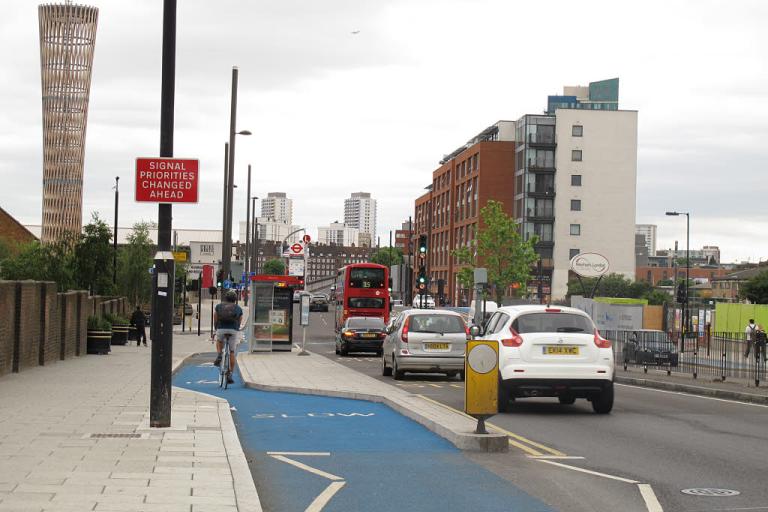
“They work fine in Europe so why not here?”: Are floating bus stops a “non-issue” or is there scope for design improvement?
Earlier this year, Daily Mail and Telegraph (yes, both of them) sent out a few camera persons to shoot videos of cyclists coming into conflict with pedestrians crossing over the ‘mini-zebra crossings’ to get to and back from the buses — a cycle path design tidbit commonly known as “floating bus stops” which has become something of a battleground for many.
However, a Twitter account called ‘Cycling in London’ has now shared a video showing the floating bus stops working, with cyclists giving way to pedestrians crossing over the cycle lane — and the video has garnered a lot of reaction from cyclists, who posed the question: “They work fine in Europe, so why not here?”
The reality of floating bus stops pic.twitter.com/ikPuJxOHqo
— Cycling in London (@Cycling_In_LDN) November 7, 2024
And true enough, most major European cities have some variation of the ‘floating bus stop’ to provide segregated infrastructure for cyclists and avoid them from mixing with buses and other motor traffic.
So do you think that these floating bus stops are a “non-issue”, or is there scope for improvement in their design to better accommodate the elderly and disabled people? Leave your thoughts in the comments below…
08 November 2024, 12:20
“If it’s bike theft you need to expect to solve your own crimes”: Journalist tracks down stolen cargo bike after “overstretched” police told him “that’s up to you” and “we do not attend when it’s a block of flats”
For the second time in as many weeks, a cyclist has highlighted the ineffectiveness and apparent apathy of the UK’s police when it comes to investigating bike theft, after he was forced to track down and seize his family’s stolen cargo bike, using an Apple AirTag, when officers effectively “washed their hands” of the matter and told him it was “up to you”.
Jim Waterson, a former media editor at the Guardian who now runs London Centric, was investigating what he describes as the “plague of bike theft in the capital”, which included some ill-fated attempts to interview convicted bike thieves, when – as fate would have it – his family’s electric cargo bike was stolen from outside his home.
08 November 2024, 12:10
Things you see only in the US...
A cyclist in Oregon has filed a $997,000 lawsuit against an ambulance service after he was charged $1,800 to be taken to the hospital… after the driver of the ambulance hit him and smashed his bike, leaving him with a broken nose and bruises all over his body.
> Cyclist charged $1,800 for journey to hospital… in ambulance whose driver crashed into him
08 November 2024, 10:47
“Manchester cyclists rejoice as a major upgrade to its world class infrastructure is unveiled in European City of Cycling”
Three cheers for 'Magic Paint'!
‘Manchester cyclists rejoice as a major upgrade to its world class infrastructure is unveiled in European City of Cycling ’. #MagicPaint@WalkRideGM
📸 @mark_webster pic.twitter.com/tc29r5AWtQ— Just Some Fella 🍉 (@EddyRhead) November 7, 2024
Adwitiya joined road.cc in 2023 as a news writer after completing his masters in journalism from Cardiff University. His dissertation focused on active travel, which soon threw him into the deep end of covering everything related to the two-wheeled tool, and now cycling is as big a part of his life as guitars and football. He has previously covered local and national politics for Voice Cymru, and also likes to write about science, tech and the environment, if he can find the time. Living right next to the Taff trail in the Welsh capital, you can find him trying to tackle the brutal climbs in the valleys.
Latest Comments
- jaymack 8 min 6 sec ago
Don't sweat over your FTP. Getting fit and enjoying your riding is far more important. If chasing the numbers is important to you then FTP is as...
- brooksby 12 min 30 sec ago
Maybe, but only because that's what the Highway Code says to do… ...
- Rendel Harris 20 min 12 sec ago
I too am one of those old folks and I remember it well (though it was gangrene rather than the actual crash directly that almost took his leg, as I...
- Rendel Harris 36 min 23 sec ago
As he says, sexual abuse as a child can rear its appalling head at any time in your life and drive you into a tailspin of depression, poor...
- SimoninSpalding 54 min 49 sec ago
I have a Ragley Trig, which is steel, has masses of clearance plus everything needed for racks, mudguards. I have it set up with a 2x10 Campag...
- thrawed 1 hour 4 sec ago
Damn they messed up with this one, services like that grow from word of mouth. Who is going to be recommending komoot now when you need a...
- wtjs 2 hours 2 min ago
Excellent, just the job! Thanks
- Rendel Harris 3 hours 23 min ago
Good point, it's England and Wales. Northern Ireland seem to have the same minimum and maximum penalties but I don't know if they work with the...
- David9694 3 hours 38 min ago
Our car-dominated urban environment is repressive and hot - let's see if we can desecrate the countryside ...
- chrisonabike 4 hours 6 min ago
Are you confusing a clearly opinionated - nay, biased rag like road.cc with a balanced, respectable news organisation like the BBC?
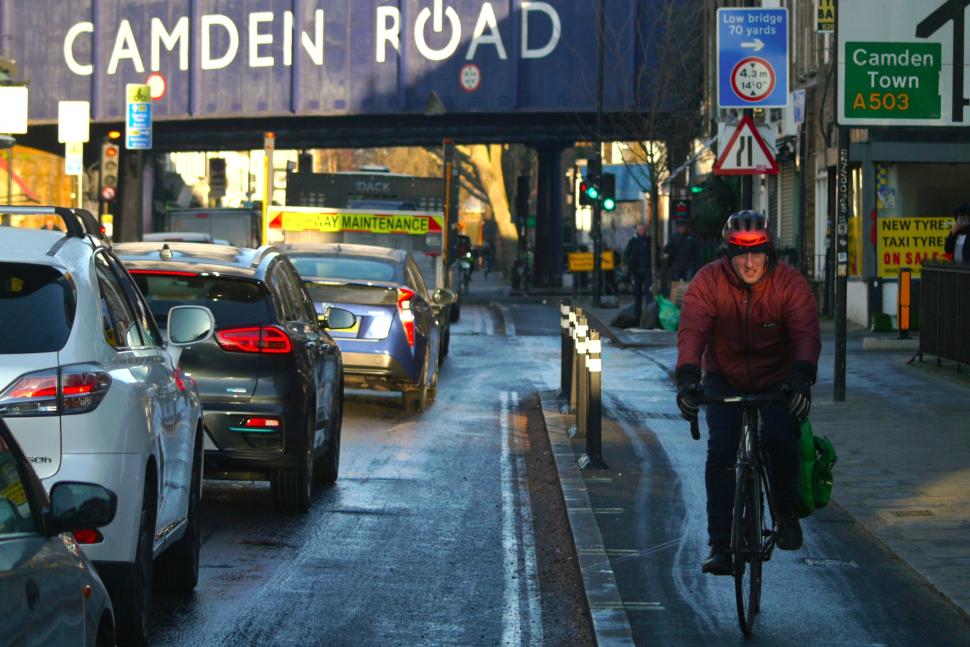
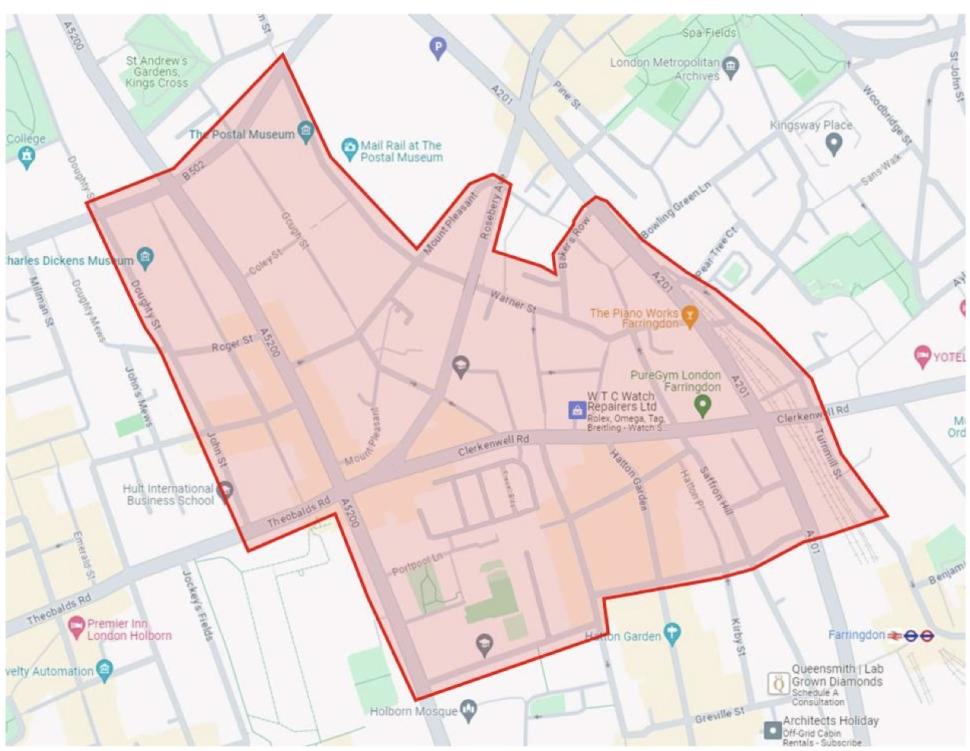
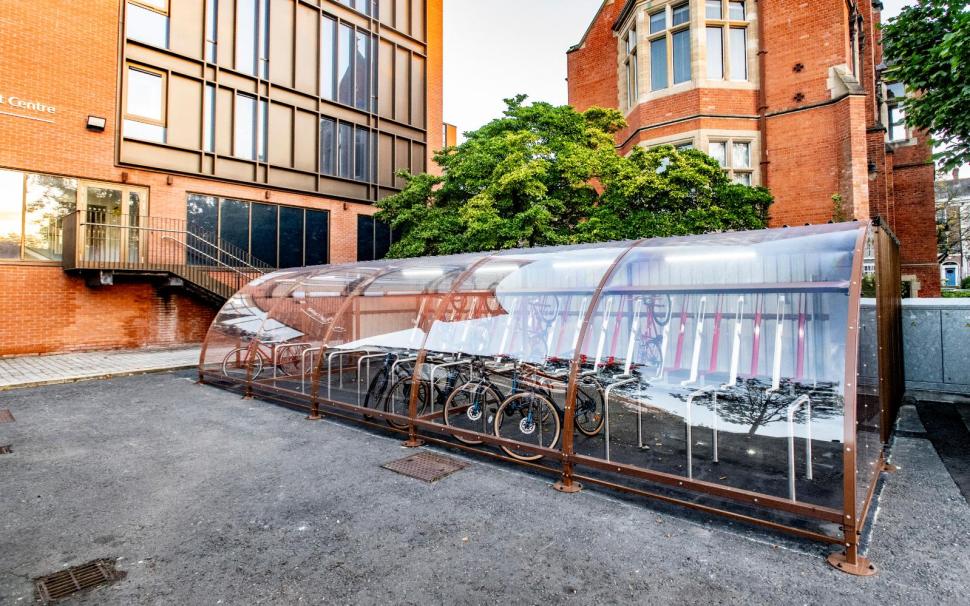


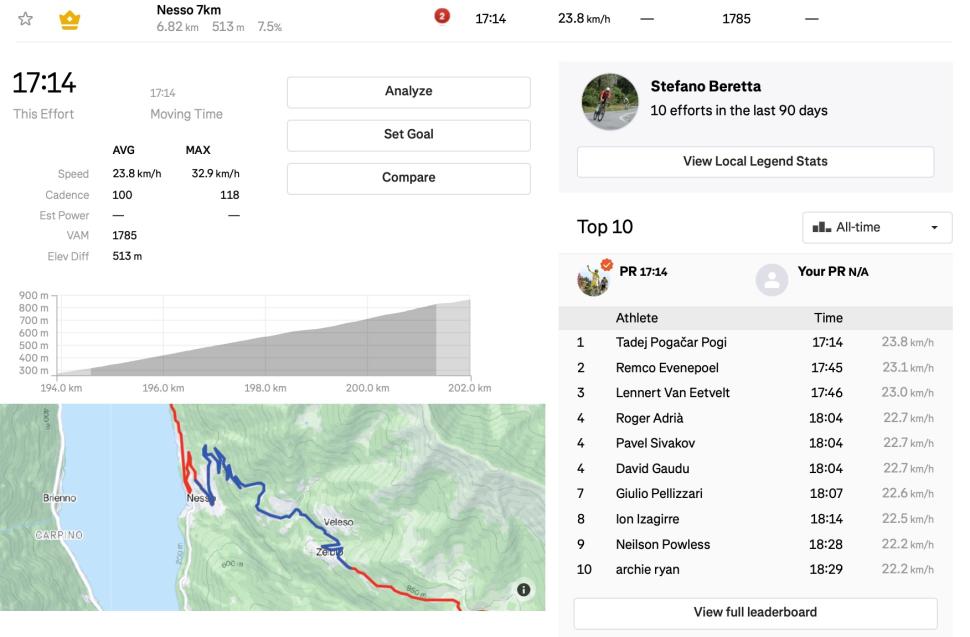

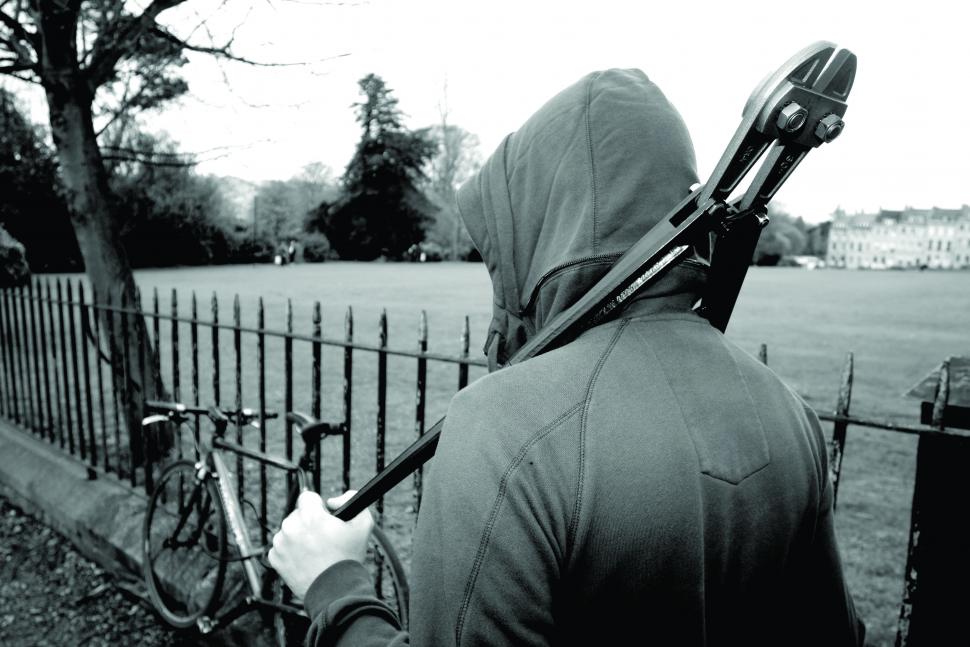
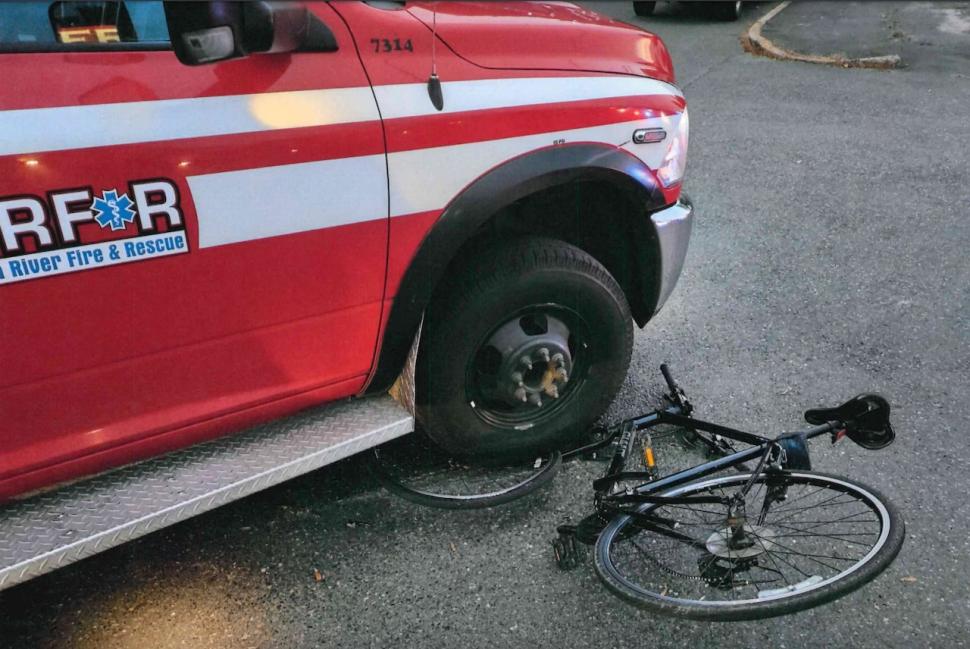
Add new comment
7 comments
It's been one hell of a ride Cav, thanks for letting us share some of it.
https://www.theguardian.com/sport/2024/nov/09/mark-cavendish-final-race-...
Do floating bus stops work?
They work very well as a form of transport infrastructure in Europe
They work extremely well as a battlefront in the latest anti-cycling culture wars in the UK
Which league do they play in?
RE: “They work fine in Europe so why not here?”: Are floating bus stops a “non-issue” or is there scope for design improvement?
Obviously they don't work here because we're not in Europe!
The one in the video is the 2nd or 3rd rate design (apparently called a "Copenhagen-style" one here - apparently common in Copehagen, see detailed article here). That is definitely inferior to the style more commonly seen in NL (see a whole article and video on those ones).
The "problem" with the latter style is it needs a bit more space. Very often in the UK this space does actually exist - why aren't we willing to "find" it? "Of course we can't have other traffic waiting behind a bus!" or the more subtle "we can't narrow the main carriageway - because of the width required by buses!" (bus companies lobby too).
Plus some recent noise from lobby groups on bus stops - with a range of opinions from "these are untried in the UK and we have concerns" to "NO! It's an assault on the elderly, blind and those with disabilities!"
Some concern is valid - those in the latter three groups are normally more affected by changes. It will probably take a generation of "new problems" e.g. some "conflict" (startled, angry and upset people and probably even crashes) until everyone has adapted and adopted new social conventions around cycle infra. Just like when cars appeared. Sadly this is further delayed by the UK's mixing of pedestrians and cyclists, inconsistent infra designs and glacial rate of deploying new infra.
I came here to basically write the same thing, the floating bus stop near me has a very narrow cycling lane between a very narrow pavement and a very narrow bus stop waiting area. It's not an enjoyable experience to cycling it and I imagine it's not a very nice experience walking past it or waiting for a bus. The devil is in the details and we don't really consider walkers, cyclist or bus users in this country other than a box ticket exercise and the box at the top is 'don't take anything away from drivers and motorists'.
Pogacar team use Shimano powermeters that are well known for their lack of accuracy from what I hear...
I'm more curious about Remco taking amphetamines (for his ADHD) these drugs are powerful performance enhancers!
woah, Remco has a TUE for amphetamines? Oh come on...